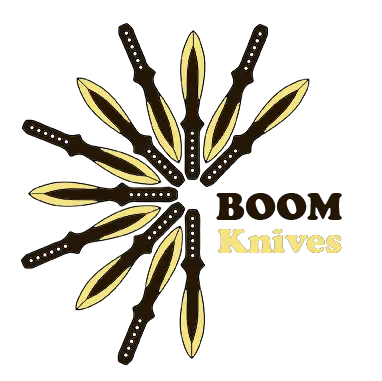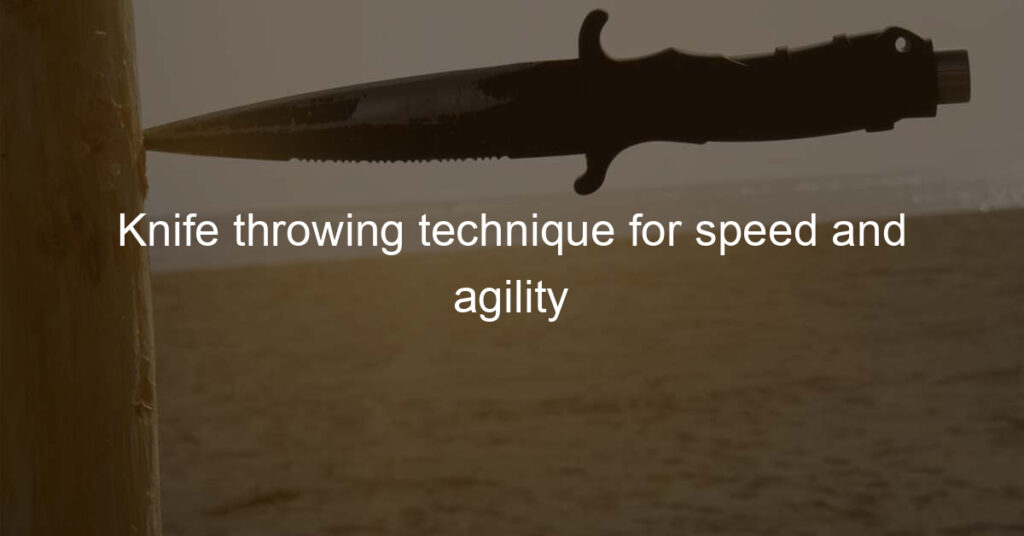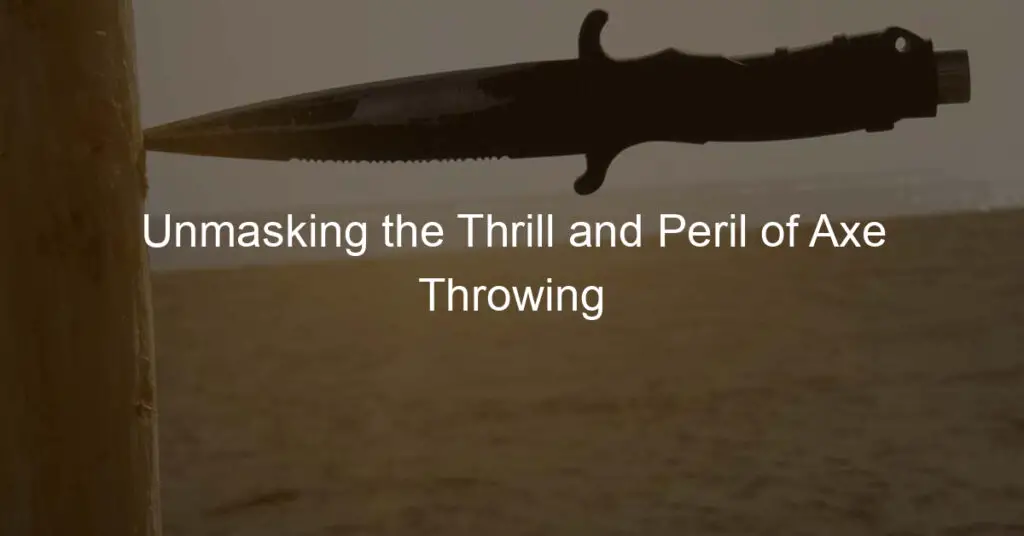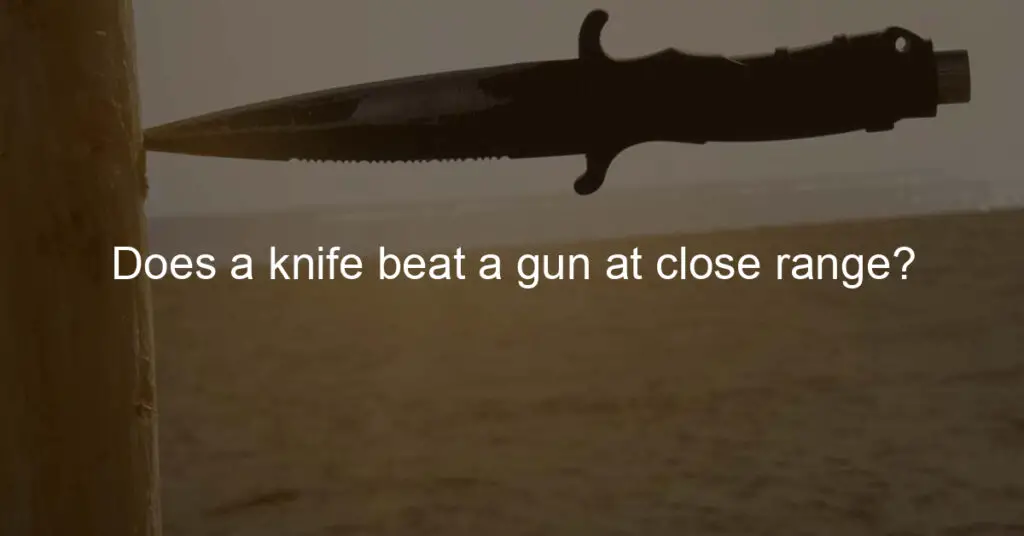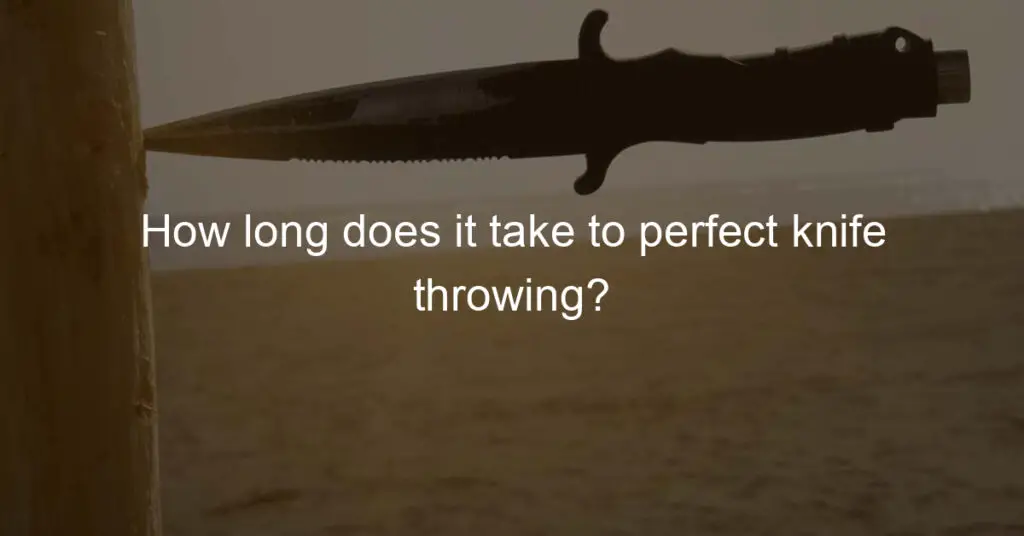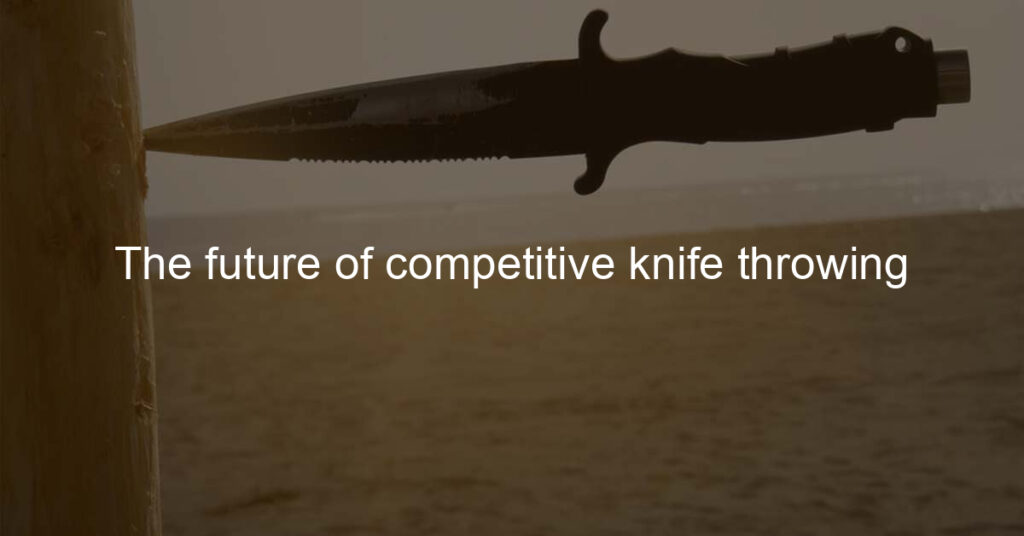Are you a knife-throwing enthusiast looking for some new tips and tricks to add speed and agility to your technique? Whether you’re an amateur or pro-level knife thrower, mastering the art of greater speed and agility can be challenging. But rest assured – with the right approach, it is possible to reach higher levels of mastery in your sport.
What is the best technique for throwing a knife quickly?
One of the most effective techniques for throwing a knife quickly is the butterfly throw. This type of throw consists of two spins as you release the knife and allow it to fly directly toward its target.
First, you spin the knife in a horizontal motion at shoulder level or slightly higher from your starting point. Next, as the blade nears your target, swiftly twist your wrist so that the handle of the knife turns downward and releases with great force and accuracy. Of course, mastering this style of throwing requires patience and practice but can be a useful skill to learn.
How can I improve my throwing speed and reaction time?
Improving your throwing speed and reaction time can be tricky, but with enough practice and determination, anyone can become an ace at throwing. One great way to start is to research drills and exercises online that will help you build strength and agility, as these are two key components for throwing power.
Consider focusing on specific muscle groups like arms, legs, chest, and core when exploring exercises to maximize the benefits of each one. You may also want to look into balance and flexibility training – both are important skills for throwing accurately.
With practice and a good understanding of the different techniques that may help you throw faster and react quicker, you’ll soon be ready to hit your targets faster than ever before!
What is the role of footwork in knife throwing?
Footwork is an important factor to consider when throwing a knife. Instead of just standing idly with your arm nocked back and ready to throw as you would with a baseball, perfecting proper footwork is key in maximizing accuracy and getting that high-score bullseye.
If the wrong steps are taken when throwing a knife, it can easily cause the blade to veer off course and not reliably reach its target. To avoid this, it’s important to take natural steps of differing lengths to propel yourself into a long stride and leg kick motion, allowing for the sort of momentum needed to completely turn your body by the time the blade leaves your hand. Doing this properly takes practice and precision but will go a long way in achieving desired results!
How do I adjust my grip for faster knife throws?
Throwing a knife correctly can be challenging, but once you get the hang of it, it will feel like second nature. To throw faster, it all comes down to your grip – because if you don’t hold the knife right, you won’t achieve your desired outcome.
The key is to keep your throwing hand as relaxed as possible while having a firm grip on the handle. This grip should allow enough room between your fingers so that you have total control and accuracy over where the blade is headed.
Don’t forget to practice too – with consistent practice, your hand-eye coordination will improve and you’ll be able to confidently increase the pace of your throws over time.
What is the best distance to throw a knife quickly?
Throwing knives can be an entertaining, yet dangerous activity. To make sure that you practice this fun activity safely and accurately, it’s important to consider the optimal throwing distance.
Most experts suggest that standing farther back from the target (approximately seven to eight paces) will provide the best throwing accuracy, as the arc of your throw can more clearly reach the target this way.
Alternatively, up-close-and-personal throws (a few paces away) are great for challenging yourself with higher levels of difficulty and sharper accuracy but, it’s important not to put yourself too close to the blade – safety first!
Can I improve my speed without sacrificing knife throw accuracy?
If you’re looking to step up your game regarding knife throwing, speed, and accuracy should both be top priorities. It’s no use being fast if you don’t hit your target, or hitting the target but too slowly.
But how can you improve your speed without sacrificing accuracy? By taking the time to practice with short and long-distance throws with small and large knives, developing the correct techniques – such as using a sturdy wrist when throwing – and using consistent arm positions, you can help make quicker throws while still maintaining precision.
Knives are sharp and dangerous weapons so safety should always be kept in mind when practicing; additionally, before increasing your speed you should ensure that all safety measures are in place. With just a few alterations to your technique, you could soon find yourself becoming a master of knife-throwing!
How important is follow-through for a fast knife throw?
Follow-through is incredibly important when it comes to fast knife throwing. If you think about it, the throw is only the beginning of a successful completion – without proper follow-through, you are wasting your throw and not accurately aiming for your target.
Without the appropriate motion and focus on the target, your body will compensate for its limitations by potentially using extra strength and throwing incorrectly. Something as simple as poor shoulder alignment can significantly hinder accuracy.
In addition, having follow-through helps with power transfer throughout your body to have a more efficient and accurate release of your knife toward the target. Ultimately, if you want to reach a good level at fast knife throwing, you need to practice follow-through over and over again!
What is the difference between a snap and a flick knife throw?
When it comes to knife throwing, there’s more to it than meets the eye. A snap throw is a technique used to quickly and proficiently launch a knife with great force.
It involves a sudden motion made with an open hand while holding the handle of the knife to propel it into the target. On the other hand, flick throws involve winding up and then releasing one’s arm while maintaining a firm grip on the knife. This method has less power behind it but is more versatile, allowing for trickier angles and directions to be thrown in.
People who like to show off may prefer this method as when done correctly can leave onlookers impressed. Ultimately, both techniques require adequate practice to safely and effectively achieve accurate throws either for recreational or competitive purposes.
How can I develop my hand and wrist speed for knife throwing?
Throwing knives takes a lot of practice and can often feel like you’re making no progress. To help make sure your technique is consistent and to develop both hand and wrist speed, work on strengthening the joints in addition to actually throwing.
Exercise your wrists by rotating them in circles while strengthening the muscles with light weights. You should also practice rolling or juggling lightweight objects similar to the type you plan on throwing to help coordinate your hand movements with the motion of throwing. Lastly, remember to warm up your entire body before starting each practice session so you don’t end up injuring yourself if you swing too hard too soon!
What are some exercises for improving knife-throwing speed and agility?
Improving your speed and agility when throwing a knife requires practice and dedication. One exercise you can start with is to make sure you are standing in the right position; your feet should be shoulder-width apart, facing straight forward with your body weight mostly on your back foot.
You should also focus on how you’re releasing the knife; an overhand motion works best as it helps reduce spin while providing more power and accuracy. You can then work up to performing throwing drills from multiple angles and jump shots.
Also, using a rubber or foam knife instead of a steel one is a good way to remain safe while still building up strength for regular knives. It’s important to focus on your progress as well so that you stay motivated to become an expert knife thrower!
Conclusion
Finally, we conclude that improving your knife-throwing technique can be a great way to increase your speed and agility. Whether you are a professional marksman or just an enthusiast looking for some extra flair, integrating this skill into your arsenal can only make you stronger. With dedication, patience, and practice, anyone has the potential to become an expert at this craft! Who knows, maybe even you can become an elite marksman.
